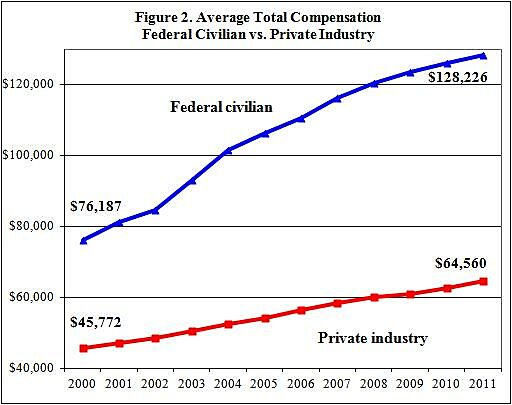Average private sector wages in the United States rose 3.0 percent in 2011, which was more than the 1.2 percent average increase for federal government workers. This was the second year in a row that average private pay rose faster than average federal pay, but that comes after many years of an escalating federal pay advantage.
Figure 1 shows average wages for private and federal workers, based on newly released data from the federal Bureau of Economic Analysis (see Tables 6.2D, 6.3D, 6.5D, and 6.6D). Federal pay has generally grown faster than private pay since the early 1990s, which is reflected in the widening gap between the two lines in the figure. The good news is that the gap has narrowed slightly the last two years, partly as a result of the recent federal pay freeze, or quasi-freeze .
Figure 2 shows similar trends for total compensation—wages plus benefits—of private and federal workers. On average, federal workers make twice the total compensation of private workers ($128,226 vs. $64,560).
The BEA data are just one way to compare pay between private and federal workers. The Government Accountability Office recently described some other comparison methods. I’ve summarized some of the issues regarding federal pay in this essay. However, we know for sure that we’ve got a $1 trillion budget deficit and that federal workers have done very well for themselves. It makes sense to keep the federal pay freeze in place, while also beginning to cut back on overly generous federal pension plans and other benefits.


